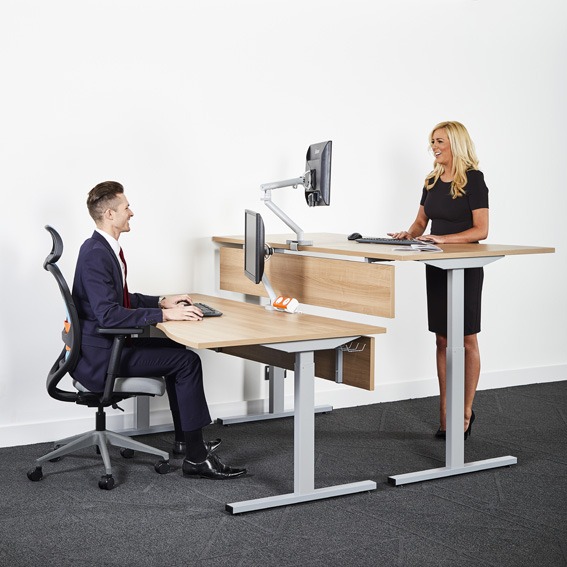We’ve all been in that awkward situation where your whole body is aching and you just HAVE to do something—anything—to help alleviate the pain. You could be standing too long and need to sit, or sitting too long and absolutely need to stand. The human body is not made to stay in the same position for hours on end. What then, do we do about situations like an office setting where everyone is literally supposed to do just that—stay put? After all of the science which points to the dangers of a sedentary lifestyle, we certainly can’t ignore the hazards of prolonged sitting.
The Seriousness of Sitting
A traditional office worker can spend up to 15 hours a day sitting. This number is alarming considering extensive studies have proven continuous sitting can lead to serious health problems such as obesity, high blood pressure, high cholesterol, diabetes, heart disease and stroke. Moreover, too much sitting can lead to bad posture which, in turn, leads to back pain, neck pain, and hip displacement. Sitting for long periods of time, even in your garden office, can be so bad for you, in fact, that it can potentially offset any efforts of vigorous exercise.
The New Standard of Standing
While standing desks are not exactly new, their popularity has significantly boomed over the last decade with a worldwide commitment to better health. Between traditional office settings and the ever-growing world of work-from-home setups, they have made a prominent impression on office furniture and design.
Many studies have shown standing desks have remarkable health benefits. Standing burns more calories than sitting, which means these desks could help prevent or even treat obesity and other illnesses which may result from it such as diabetes, heart disease, high blood pressure, and high cholesterol. As previously mentioned, good posture is hard to maintain while sitting for prolonged periods of time.
This strain can put undue pressure on the hips, causing back and neck pain, which can easily become chronic if left untreated and the cause left unfixed. Standing straightens the spine and aligns the hips. Finally, standing helps reduce the risk of blood clots as it permits more efficient blood flow throughout the body. This is said to result in better focus and overall energy, both important when you are attempting to give your best work performance.
This all sounds great. However, how practical is it? Many may find the notion of standing for an eight-hour or more workday to be completely unachievable. What if someone is recovering from a surgery or injury? What about pregnant women or people who just find they need more support throughout the day?
Striking the Right Balance
The answer may seem cliché, but it is absolutely the right one—balance. Too much of anything is rarely a good idea, and the same ideology applies to the expectations you put on your body throughout a workday.
While sitting for an entire workday has proven to lead to severe health issues, experts warn workers not to throw away their office chair completely. Because of the inundation of data regarding sitting, many may be tempted to go all or nothing and try to stand all of the time, which can actually lead to body fatigue. This can lead to its own issues, such as chronic pain. In one Canadian study, scientists found that 50% of its subjects developed low back pain when asked to stand at an ergonomic desk for two consecutive hours”. None of these participants had ever suffered from said pain before the trial.
During thorough testing, Professor of Kinesiology at Waterloo College, Jack Callaghan, found the ideal ratio between sitting and standing is somewhere between “1:1 and 1:3“. In other words, in order to get any benefit from standing, one must do so for at least 30 minutes an hour. To avoid potential problems from too much standing, one should not exceed 45 minutes.
Another important thing is that not all office chairs are the same. Some chairs are better than others. You can get a big and tall office chair that has ergonomic features. These are much better than the standard chairs that you see in your local shop.
Conclusion
If you are new to standing during the workday, it would be best to crawl before you walk, so to speak. Perhaps you can begin with 15-minute segments and slowly work your way up to 30. Finding the right balance for your body and your fitness level may take some time, but the effort is worth it. Science proves the human body needs variation to stay its healthiest and health is, after all, the greatest gift we can give to ourselves.
